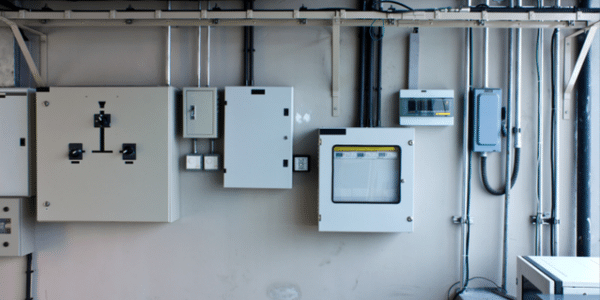Cost-Efficiency and Savings: How Electrical Fiberglass Boxes Can Benefit Your Bottom Line
6/6/20244 min read


Introduction to Electrical Fiberglass Boxes
Electrical fiberglass boxes have emerged as a highly effective solution in various industries, offering a multitude of benefits that set them apart from traditional materials such as metal and plastic. Primarily composed of reinforced fiberglass material, these boxes are designed to house electrical components and protect them from external elements. Their unique properties make them an excellent choice for a wide range of applications, from industrial settings to residential installations.
One of the key advantages of electrical fiberglass boxes is their durability. Unlike metal, fiberglass does not rust or corrode, making it ideal for use in harsh environments where exposure to moisture or chemicals is a concern. This corrosion resistance translates into a longer lifespan, reducing the need for frequent replacements and, consequently, lowering maintenance costs. Additionally, fiberglass boxes are non-conductive, providing an inherent safety feature that helps prevent electrical shocks and short circuits, which is a significant advantage over metal enclosures.
Furthermore, electrical fiberglass boxes are notably lightweight yet robust, offering an excellent strength-to-weight ratio. This characteristic simplifies transportation and installation processes, resulting in reduced labor costs and increased efficiency. In comparison to plastic, fiberglass provides superior resistance to impact and environmental stress, ensuring that the enclosures maintain their structural integrity even under challenging conditions.
The versatility of electrical fiberglass boxes is another standout feature. They are available in various sizes and configurations to meet specific requirements, making them suitable for a variety of applications, from electrical junctions to complex control systems. Their adaptability extends to customization options, allowing for the inclusion of additional features such as hinges, locks, or mounting provisions tailored to specific needs.
In summary, the unique properties of electrical fiberglass boxes—durability, non-conductivity, corrosion resistance, and versatility—make them a compelling choice for industries seeking cost-efficient and reliable enclosures. By understanding these fundamental advantages, one can better appreciate how these boxes contribute to cost savings and operational efficiency.
Cost-Efficiency Benefits of Fiberglass Electrical Boxes
Fiberglass electrical boxes offer a range of cost-efficiency benefits that make them an attractive choice for various applications. One of the most significant advantages is their longer lifespan. Unlike traditional materials such as metal or plastic, fiberglass is highly resistant to corrosion, rust, and weathering. This inherent durability means that fiberglass boxes require fewer replacements over time, translating into lower long-term costs. Additionally, their robust nature minimizes the need for frequent maintenance, further reducing expenses associated with upkeep.
The initial installation of fiberglass electrical boxes also presents cost-saving opportunities. These boxes are notably lighter than their metal counterparts, which simplifies the installation process. The lightweight nature of fiberglass reduces labor costs, as fewer personnel and less time are needed to handle and install the boxes. Moreover, the ease of handling fiberglass boxes diminishes the risk of workplace injuries, potentially lowering insurance premiums and associated costs.
Another significant aspect of cost efficiency lies in the energy savings that fiberglass electrical boxes can provide. In environments subjected to harsh conditions, such as extreme temperatures or high moisture levels, traditional materials often fail, leading to potential energy losses and increased utility bills. Fiberglass, however, maintains its integrity and insulating properties in such conditions, ensuring that electrical systems remain efficient and operational. This resilience can result in substantial energy savings over time, further enhancing the cost-effectiveness of fiberglass electrical boxes.
Overall, the combination of a longer lifespan, reduced maintenance needs, lower installation costs, and energy efficiency makes fiberglass electrical boxes a prudent investment. By opting for these durable and versatile solutions, businesses can achieve significant cost savings and enhance their bottom line, all while ensuring reliable performance in a variety of challenging environments.
Real-World Applications and Case Studies
Electrical fiberglass boxes have demonstrated significant cost-saving benefits across various industries. By examining real-world applications and case studies, we can see how these boxes offer both financial and operational advantages.
In the telecommunications industry, a major service provider made the switch to fiberglass electrical boxes for their network infrastructure. Prior to the switch, the company faced frequent maintenance issues with their metal boxes, which were prone to rust and corrosion. After transitioning to fiberglass, the company reported a 30% reduction in maintenance costs due to the durability and corrosion-resistant properties of fiberglass. This switch not only reduced downtime but also enhanced the longevity of their network installations, leading to a substantial decrease in operational expenses over time.
The utilities sector offers another compelling case. A regional electric utility company replaced their traditional metal enclosures with fiberglass electrical boxes in their substations. The harsh environmental conditions, including high humidity and salt exposure, had previously led to rapid deterioration of metal boxes, necessitating frequent replacements. By opting for fiberglass, the utility company experienced fewer replacements and repairs, resulting in a noteworthy 25% annual savings in maintenance and replacement costs. Moreover, the improved insulation properties of fiberglass contributed to a safer and more reliable electrical system.
In the construction industry, a large-scale commercial building project integrated fiberglass electrical boxes throughout its infrastructure. The project managers were initially drawn to fiberglass due to its lightweight nature, which simplified transportation and installation processes. The labor costs were significantly reduced as fewer workers and less time were needed for installation. Additionally, the enhanced safety features and compliance with stringent building codes further underscored the practicality and cost-effectiveness of fiberglass. The project saw a 20% reduction in overall electrical infrastructure costs, validating the financial benefits of choosing fiberglass over traditional materials.
These examples from telecommunications, utilities, and construction highlight the versatility and broad applicability of fiberglass electrical boxes. They provide concrete evidence that switching to fiberglass can lead to substantial financial savings and operational efficiencies, making it a prudent choice for various industries looking to optimize their bottom line.
